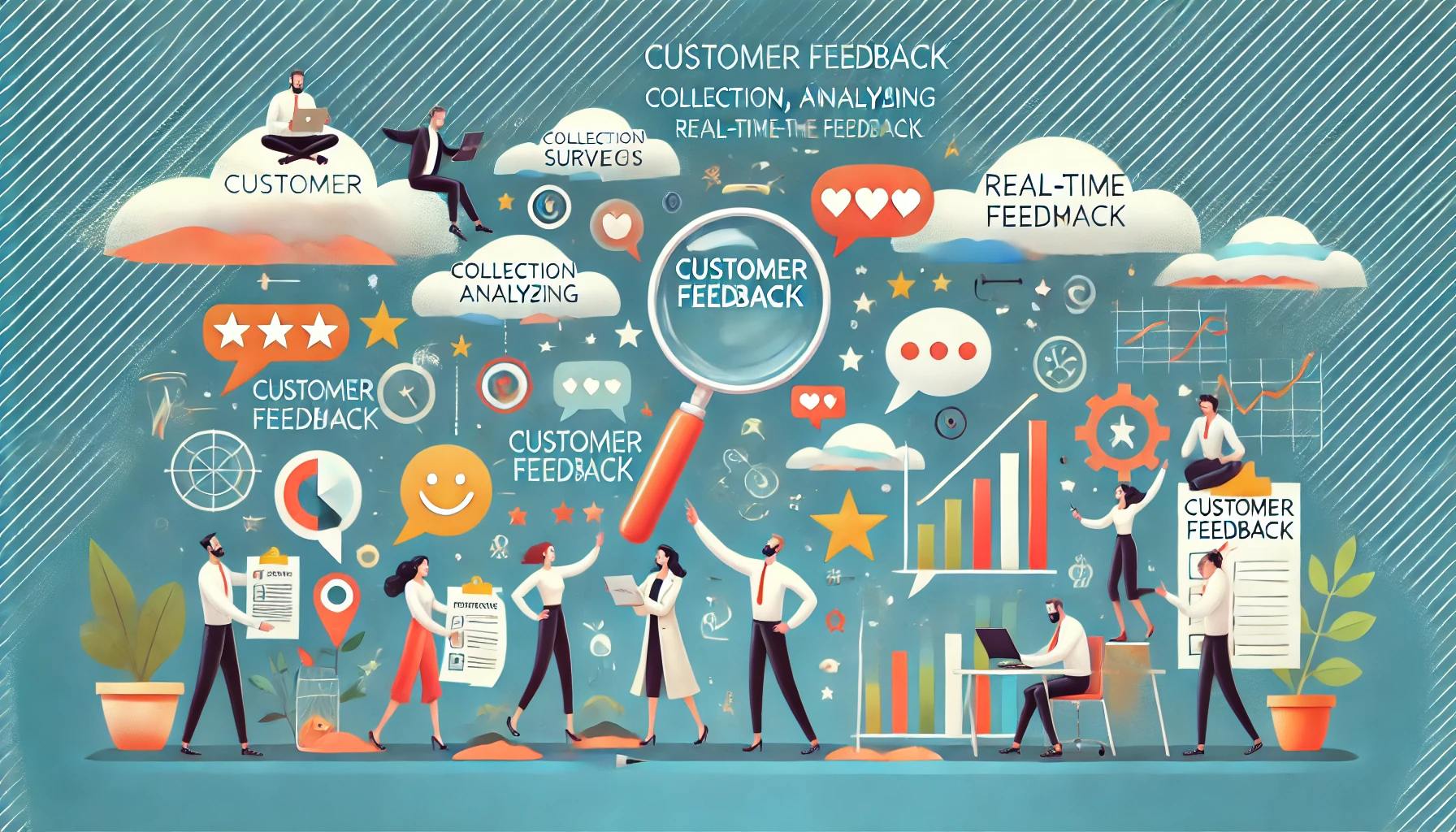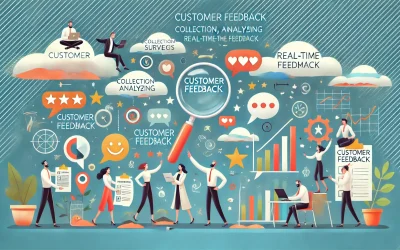Conclusion: Building a Feedback-Driven Product Development Lifecycle
In today’s competitive market, the best products are those that evolve with their users’ needs and preferences. Integrating customer feedback into the product development lifecycle is not just beneficial; it’s essential for creating user-centric products that resonate and adapt. By embedding feedback mechanisms into every phase of development, companies can ensure that their products are built with real users in mind, fostering satisfaction, loyalty, and long-term success.
Throughout this blog series, we’ve explored various aspects of integrating customer feedback, from effective collection methods to analysis techniques, and the powerful role of tools like LogRocket. Each of these components contributes to a feedback-driven development cycle, which can help product teams stay in tune with their customers and continuously improve the user experience.
Why Customer Feedback Matters
Customer feedback serves as a bridge between user expectations and product functionality. By listening to customers, product teams gain insights into how users actually experience the product—not just how it was intended to be used. This knowledge empowers teams to make informed decisions, prioritize improvements, and address issues that could otherwise lead to user frustration or churn.
Research highlights the significance of a customer-focused approach. A PwC survey found that one in three consumers would leave a brand after a single negative experience, regardless of their prior loyalty. By integrating customer feedback, companies can avoid such pitfalls, actively respond to user needs, and build stronger relationships that withstand challenges.
Key Methods for Collecting Customer Feedback 🔗
Feedback collection is the first step in creating a responsive product development lifecycle. The three methods we discussed—surveys, usability testing, and interviews—each offer unique insights.
- Surveys capture both quantitative and qualitative data, giving product teams a broad view of customer satisfaction, feature requests, and pain points.
- Usability testing allows teams to observe firsthand how users interact with a product, identifying friction points and areas for improvement before a full launch.
- Interviews provide deep, qualitative insights into the motivations and emotions behind user actions, uncovering perspectives that might be missed by more structured methods.
Using a combination of these approaches enables product teams to build a holistic understanding of their users, addressing not just what users want, but why they want it.
Turning Feedback Into Actionable Insights 🔗
Collecting feedback alone is insufficient; what matters is transforming that raw data into actionable insights that drive product improvements. Analysis techniques like thematic analysis, sentiment analysis, and frequency analysis help product teams break down feedback into meaningful patterns.
- Thematic analysis organizes qualitative feedback into themes, helping teams identify common issues or suggestions.
- Sentiment analysis gauges the emotional tone of feedback, allowing teams to track user satisfaction over time.
- Frequency analysis highlights the most commonly mentioned issues, helping prioritize updates based on user needs.
These analysis techniques, when combined, provide a comprehensive view of user feedback, ensuring that no critical insights are overlooked. By consistently analyzing feedback data, product teams can create a roadmap for continuous improvement.
Enhancing Feedback with Real-Time Tools 🔗
Real-time analytics tools like LogRocket enhance the feedback-driven development cycle by providing direct insight into user interactions. While surveys and interviews rely on users to articulate their experiences, LogRocket allows teams to observe user behavior in real-time. This eliminates guesswork, enabling product teams to address issues immediately and make data-driven decisions that improve the user journey.
For instance, LogRocket’s session replay feature allows teams to watch recorded user sessions and see exactly where users encounter obstacles or abandon processes. By identifying these pain points, teams can implement targeted updates that directly address user needs. Error tracking and performance monitoring features help developers quickly identify and fix technical issues, ensuring a smoother user experience.
Real-time tools like LogRocket thus provide a valuable layer of insight that complements traditional feedback methods, offering a 360-degree view of the user journey.
Feedback as an Ongoing Dialogue
A common mistake among product teams is viewing feedback as a one-time step in the development process. In reality, customer feedback is an ongoing dialogue. Users’ needs and expectations evolve, and a product that was once perfectly aligned with them may become outdated if feedback is not continuously collected and integrated.
Maintaining this dialogue requires a proactive approach: regular surveys, usability testing after significant updates, and continued use of real-time analytics tools. By treating feedback as a continuous process, companies stay agile and responsive, ensuring their products adapt to evolving market demands and user expectations.
As users recognize that their feedback directly shapes the product, they feel a sense of involvement and loyalty. This sense of empowerment fosters deeper engagement, boosting both user satisfaction and retention.
Creating a Feedback-Driven Development Cycle
With a structured feedback-driven development cycle, organizations can build products that genuinely serve their customers. Here’s a quick summary of the steps:
- Collect Diverse Feedback: Use a mix of surveys, usability tests, and interviews to capture a comprehensive view of customer needs.
- Analyze for Actionable Insights: Use thematic, sentiment, and frequency analysis to turn feedback into meaningful data.
- Implement Real-Time Monitoring: Employ tools like LogRocket to gain immediate insight into user interactions, catching issues as they happen.
- Adapt Continuously: Treat feedback as an ongoing process, regularly updating the product in response to user insights.
By embedding these steps into every phase of development, companies can ensure they’re always aligned with customer needs, ready to adapt as those needs change.
The Future of Feedback-Driven Development
In a feedback-driven world, products evolve alongside their users, creating lasting value and fostering loyalty. As companies continue to embrace feedback at every stage of development, they build products that not only meet user expectations but exceed them. This approach does more than improve a product; it builds a customer-centric brand reputation, driving growth and establishing a competitive edge.
In summary, integrating customer feedback into the product development lifecycle isn’t just a strategy; it’s a commitment to continuous improvement and customer satisfaction. By making feedback an integral part of product development, organizations can create products that adapt, evolve, and resonate deeply with their users, ensuring long-term success.









